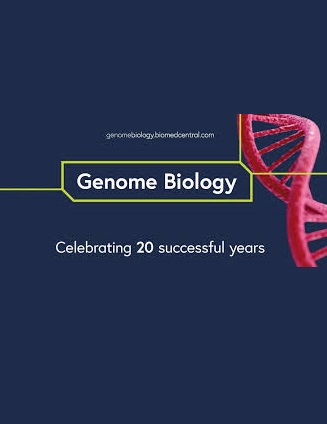STASCAN 通过深度学习解译空间转录组学中的精细分辨率细胞分布图
IF 10.1
1区 生物学
Q1 BIOTECHNOLOGY & APPLIED MICROBIOLOGY
引用次数: 0
摘要
空间转录组学技术已被广泛应用于通过解析组织中的基因表达谱来解码细胞分布。然而,测序技术仍然限制了绘制精细分辨的空间细胞类型图的能力。为此,我们开发了一种基于深度学习的新方法--STASCAN,通过整合基因表达谱和组织学图像的细胞特征学习,预测只有组织学图像的捕获区域或未知区域的空间细胞分布。STASCAN 成功应用于来自不同空间转录组学技术的各种数据集,并在解密更高分辨率的细胞分布和解析增强的组织结构方面显示出显著优势。本文章由计算机程序翻译,如有差异,请以英文原文为准。
STASCAN deciphers fine-resolution cell distribution maps in spatial transcriptomics by deep learning
Spatial transcriptomics technologies have been widely applied to decode cellular distribution by resolving gene expression profiles in tissue. However, sequencing techniques still limit the ability to create a fine-resolved spatial cell-type map. To this end, we develop a novel deep-learning-based approach, STASCAN, to predict the spatial cellular distribution of captured or uncharted areas where only histology images are available by cell feature learning integrating gene expression profiles and histology images. STASCAN is successfully applied across diverse datasets from different spatial transcriptomics technologies and displays significant advantages in deciphering higher-resolution cellular distribution and resolving enhanced organizational structures.
求助全文
通过发布文献求助,成功后即可免费获取论文全文。
去求助
来源期刊

Genome Biology
Biochemistry, Genetics and Molecular Biology-Genetics
CiteScore
21.00
自引率
3.30%
发文量
241
审稿时长
2 months
期刊介绍:
Genome Biology stands as a premier platform for exceptional research across all domains of biology and biomedicine, explored through a genomic and post-genomic lens.
With an impressive impact factor of 12.3 (2022),* the journal secures its position as the 3rd-ranked research journal in the Genetics and Heredity category and the 2nd-ranked research journal in the Biotechnology and Applied Microbiology category by Thomson Reuters. Notably, Genome Biology holds the distinction of being the highest-ranked open-access journal in this category.
Our dedicated team of highly trained in-house Editors collaborates closely with our esteemed Editorial Board of international experts, ensuring the journal remains on the forefront of scientific advances and community standards. Regular engagement with researchers at conferences and institute visits underscores our commitment to staying abreast of the latest developments in the field.
 求助内容:
求助内容: 应助结果提醒方式:
应助结果提醒方式:


